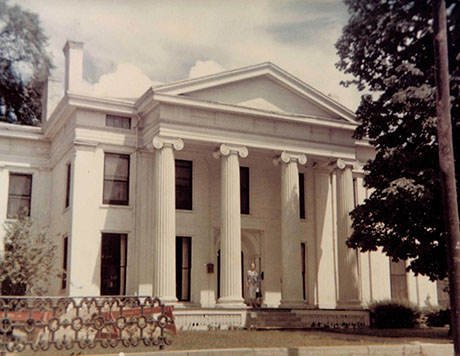
It began when Dean Richmond and his wife Mary Elizabeth chose Batavia, New York, as their home in the mid-1800s. The mansion that many remember as the Richmond Mansion was not built by Dean Richmond but rather by William Davis, a land speculator in the 1830s. He made the central part of the mansion.
Over the years, the land changed hands five times before the actual estate was built. It was still in stages as it changed hands three more times before Dean and Mary Elizabeth Richmond took title to the property on April 24, 1854. The Richmonds bought the mansion for $9,000.
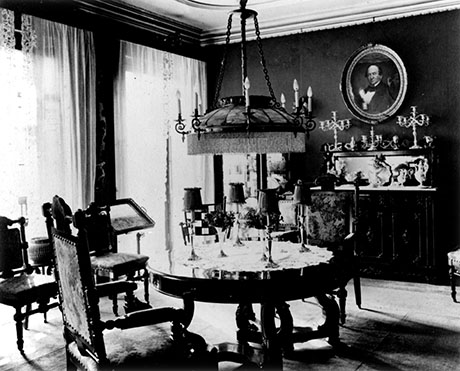
With Dean's money and Mary's exquisite taste in furnishings, the mansion eventually was considered one of the most imposing structures in the state. So they began their restoration by changing the Federal-style design into a much larger home with a wide front veranda supported by four stately columns two stories high. At the top of the roof, a graceful balcony extended around the house. Beautiful gardens surrounded their home with a variety of rare, often imported plants and flowers. The interior was magnificent, with a wide hall through its center, spacious rooms on both sides, large side wings extending out from the middle of the house, and a long addition in the rear.
When supplies were needed, horse-drawn wagons drove right into the mansion's basement. It was designed to ease the unloading of coal for the three furnaces and food for the kitchen.
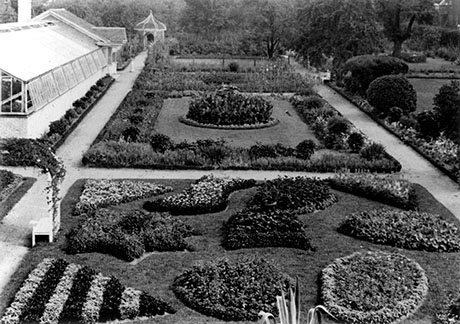
A large greenhouse stood amidst the formal gardens. A lacy, wrought iron fence marked the front of the mansion grounds that also featured sunken Italian gardens. That fence today borders the parking for the Richmond Memorial Library and St. Joseph's Church.
Majestic splendor reigned throughout the mansion; one room had a one-of-a-kind crystal chandelier. Carved rosewood and highly polished mahogany were the prevailing woods. One bedroom had a toilet set bearing the Tiffany mark. The rooms were decorated with plastered moldings and ceiling center medallions from which many chandeliers were suspended. The main bedroom had an adjoining bathroom complete with solid silver fittings.
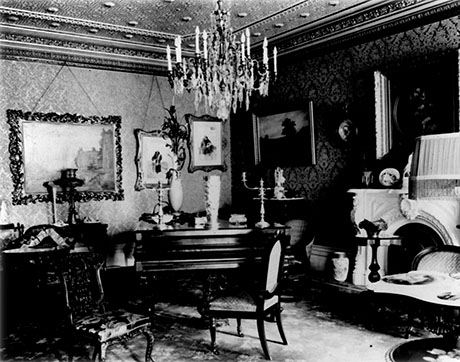
Mr. and Mrs. Richmond were wonderful hosts, and many brilliant galas were held at their mansion, including an annual holiday ball conducted in their drawing room and ballroom. The drawing-room contained a yellow velvet carpet flowered with roses, yellow damasked walls adorned with solid gold, framed artwork, and yellow satin damask furniture: French plate glass mirrors and one large ornate mirror between the windows reaching from floor to ceiling.
Mrs. Richmond presided over the mansion with dignity and grace and was loved by the town and visiting dignitaries. She possessed the education her husband lacked.
Mrs. Richmond was active in the community, serving as president of the Holland Purchase Historical Society; she was noted for her charity and business sense.
Dean Richmond may not have had a formal education and might have appeared calculating and hard-hearted, yet he was admired by members of the Brotherhood of Locomotive Engineers. In addition, he gave generously to the building of the School for the Blind and St. James Church.
Richmond's death came suddenly on August 27, 1866. He was in New York City at the home of Samuel Tilden after returning from the State Democratic Convention at Saratoga. The liberty pole flag was lowered to half-staff to mourn his death in Batavia. The train depot was draped in mourning, and the locomotives on the New York Central Railroad were draped in black and accompanied by the tolling of muffled bells. The locomotives drew the funeral train named Dean Richmond and George J. Whitney. Dean Richmond died at the age of 62. He was Batavia, New York's railroad magnate, director of the Utica and Buffalo Railroad Company, first vice president of the New York Central Railroad, and from 1864 to 1866, president of the New York Central.
After Dean died, Mary Richmond’s keen business sense multiplied the value of her husband’s estate.
The Richmond mansion passed from Mr. and Mrs. Richmond to their daughter Adelaide, who left it to her niece, also named Adelaide, with the provision that upon the younger Adelaide’s death, it was to go to her brother, Watts Richmond. Dean Richmond’s grandson.
Watts then sold it to strangers.
The Children’s Home occupied the mansion from 1928 to 1966, when the Batavia Board of Education purchased it for $75 000 and tore it down to build a more extensive library.
Today, the Richmond Memorial Library’s Reading Room has suspended from the ceiling the chandelier that hung in the Richmond dining room. Also, portraits of members of the Dean Richmond family can be seen on display in the library.
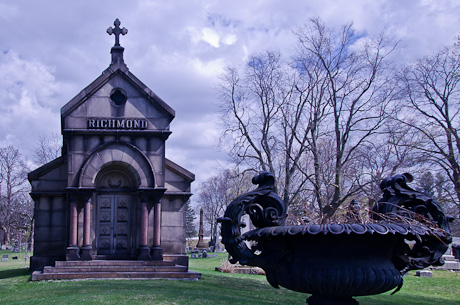
File Photo: Richmond Mausoleum photo by Howard Owens.
Top four photos, courtesy the Holland Land Office Museum.
